The views expressed in this blog are entirely my own and do not represent the views or opinions of the World University Service of Canada, the Kenya Equity in Education Project, or Windle Trust Kenya.
The last time I posted, I had just arrived at Kakuma refugee camp. It’s been about three weeks since then, two of which I spent in Kakuma, and one in Nairobi to fulfill some duties at our head office. Now I’ve been back in Kakuma for two days and expect to stay here until mid-September.
Kakuma is a semi-arid region in the northwest of the country. There has been a refugee camp here since 1992, initially established in response to Sudan’s second civil war. The inhabitants today are primarily from Sudan, South Sudan, and Somalia, although there are others from the Congo, Burundi, Rwanda, and Ethiopia. Since December 2013, there has been an influx in population due to South Sudan’s ongoing civil conflict. The population is about 130,000.
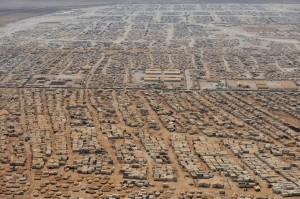
An aerial photo of Kakuma from Wall Street Journal http://blogs.wsj.com/photojournal/2013/09/03/worlds-largest-refugee-camps/
The camp feels like a small city – there are roads, shops, and restaurants (I had lunch at an Ethiopian restaurant on Eid and it was yummy). The wildlife consists mainly of goats and cats. Due to the dry climate, people rely mainly on food supplies from the World Food Programme (WFP) and a range of informal economic activities. It is divided into 4 main districts and each is subdivided into blocks. The largest district is Kakuma 1 and it begins just outside of the compound I live in. There are four main compounds for development/humanitarian workers. There’s one for the UN, one for the WFP, a third for smaller NGOs, and another for miscellaneous residences. I stay in the third one. Here, there are two offices for our NGO, Windle Trust Kenya (WTK), and others for the Lutheran World Federation (LWF), Jesuit Refugee Services (JRS), Norwegian Refugee Council (NRC), IsraelAid, FilmAId, World Vision, and more.
Next to the camp, there is a small town that is also called Kakuma. I can go there to buy bottled water, snacks, and airtime for my phone. Actually, I could walk there by myself during the day as Kakumais very safe. The 25km radius around the camp is deemed a ‘safe zone’ for development workers, which means I can travel throughout this area without armed security guards.
I like going into the camp or walking to town because it’s the closest I can get to the hustle and bustle of a city. When I walk to town I usually find a few kids following me, and there are many cuties who incessantly yell “HOW AH YOU HOW AH YOU HOW AH YOU” until I acknowledge them. The atmosphere in Nairobi is much more cosmopolitan so my presence usually doesn’t phase anyone (although I do get some weird glances getting on the matatu) but here in Kakuma my white skin is a bit more of a novelty for the kiddies. In town there are also many Turkana, a Nilotic ethnic group who are unique in how they’ve preserved much of their traditional way of life despite Kenya’s industrialization.
It is very hot here. Most of the time I am a sweaty mess. During the day, the temperature gets up to 34 or 35 Celsius. It’s not so bad during the night, when it can get as low as 25. Actually, it’s winter now so we’re experiencing the year’s coolest temperatures, and I can expect to experience 40 degrees and up when I come back later in the year. Luckily, it is not humid like the smoggy disaster Toronto is during the summer. Also, one of our offices has an air conditioner and I successfully got myself a seat in that room. The challenge is trying to get my coworkers to keep the damn door closed, especially when it’s busy and people are constantly coming in and out of our cramped workspace. Because our compound’s electricity runs on a generator, we have scheduled power outages to save energy. Two hours every day Monday-Saturday, and four hours on Sunday morning. Running water is also shut off between 10pm and 6am, but I’m usually showered and in bed by then because the heat tires me out.
KEEP works in 33 schools in Kakuma. About half are in the refugee camp. The others are in host communities, which are in the surrounding region and enroll both refugees and Kenyan nationals. I haven’t been to a host community school yet (some are a considerable distance away) but I will next week. My first visit to a Kakuma school was during Saturday remedial classes. They were for students in grades 6, 7, and 8. The schools are very plain in construction and contain wooden benches and tables. They are, as my Nairobi roommate says, “concrete schools with nooooo art!”. The remedial classes were very big. One had 105 students and only 1 teacher. When I walked in with a few other staff, everyone stood up until we asked them to sit. When I introduced myself, everyone responded politely with a resounding “GOOD AFTERNOON!” Thinking what it would be like to do a similar visit in a Canadian grade 8 classroom, I picture students slouching, chewing gum, and rolling their eyes. Not that there’s anything wrong with slouching, gum, or eye-rolling, but the students in the remedial classes have a refreshing enthusiasm for learning.
So WHAT am I doing here? As Monitoring and Evaluation Assistant, I’m providing on-the-ground assistance for KEEP’s data collection/entry/organization needs. We’re dealing with a lot of data. My main project for my first visit was to coordinate a team of data entry clerks to input the performance (grades) and attendance data for the 33 schools we work in. I worked with some wonderful high school students. It was very tedious. The schools aren’t the greatest at keeping complete and organized records. And you can’t always blame the teachers, who keep records with pen and paper and are very busy with classes of 40-60 students. It is also difficult to track when and why students switch schools, stay back a year, or drop out, which are issues we are trying to learn more about. We also collect attendance data for our remedial classes (every Saturday, plus 5 days a week during holidays), scholarship program, and distribution activities (sanitary pads, textbooks, uniforms). Our goal is that we will be able to demonstrate a relationship between improved attendance/performance among girls and the services we provide, whether it be positive or negative, to understand how refugee girls can be best supported to succeed. So yeah, that’s what monitoring is! Unfortunately it makes a lot more sense in theory than in practice, considering contextual factors like regional conflict (like the recent influx of refugees from South Sudan), challenges with IT infrastructure, and various in-school realities.
Hopefully the last paragraph didn’t bore you. There are fun things to do here too, though I admit it’s slim pickins’ for entertainment. Our common room has a TV with many channels, so I can watch the Kenyan news, or BBC or alJazeera. I discovered last night we have the Food Network and TLC. I’ve been enjoying watching a show called Naswa, which is basically Just for Laughs Gags, only Kenyan. And of course, I can catch up with what Marie Cruz or Octavio have been up to on one of the Mexican soaps. There’s also a bar in our compound where I can get 500ml of Tusker beer for 180 bob (around 2 bucks). The bar is called Katherine’s, which perhaps is a sign someone is looking out for me because my best friend is named Katherine. And yes, there are some good parties in Kakuma. For some reason, everyone here refers to one as “a bash.” I went to a bash at the LWF mess hall a while ago. I was too shy to dance, being the only mzungu, and having had only 2 beers, but it was still pretty chill.
There’s one last thing I’ll mention because it’s really exciting. Yesterday I attended a graduation ceremony for all of the WUSC scholarship recipients heading to Canadian universities next month! This year, WUSC is sponsoring 45 students, half of which are from Kakuma. In Canada, I’ve volunteered with the Student Refugee Program for three years and it was incredibly special to see the students before they embark on this new chapter of their lives. The students did a great job of organizing the event and it was inspiring to hear speeches from the class representative, our program director, and a rep from the UNHCR. I felt privileged to hang out with Majak, who is heading to UTSC in the fall and is cousins with one of the students who arrived at UTSC two years ago. I can’t wait to see him again when I get back to Canada in February and help out with our WUSC local committee again.
There’s a lot in store for this visit to Kakuma. This week we are hosting a conference for all of the high school girls in our scholarship program and their parents. Then next week, I’m going to a town called Lokichoggio, near the Sudanese border, to attend a teachers’ training on girl friendly classrooms. Then, back to working with data. I’ll also be working on my research proposal for my undergrad thesis. Stay tuned for more on that!

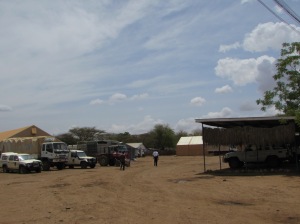
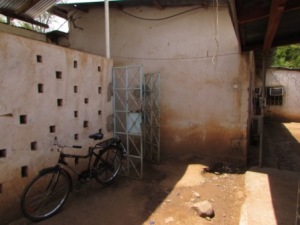
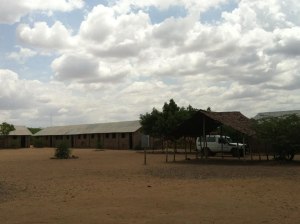
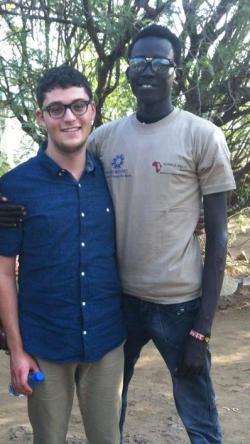
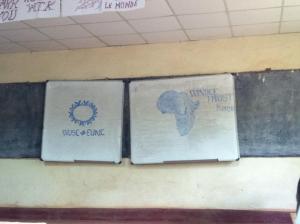
wow! Kakuma refugee camp has more people than Belize City, Belize… I’m shocked and amazed!
LikeLike
I can imagine the teachers’ ordeal having that much student in a classroom. But with that, I am at awe with their passion to educate their Future. I like the fact that you pointed out that despite their lack of technology or even of basic needs, they have that “refreshing enthusiasm for learning.” This is something which many of us who learn “with comfort” take complacently, like it is more of an expectation to be met, than a necessity or more so, a duty or mission to fulfill. 🙂 Keep up, my friend!
LikeLiked by 1 person